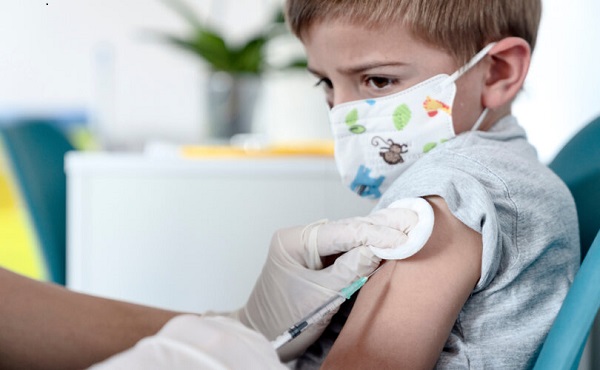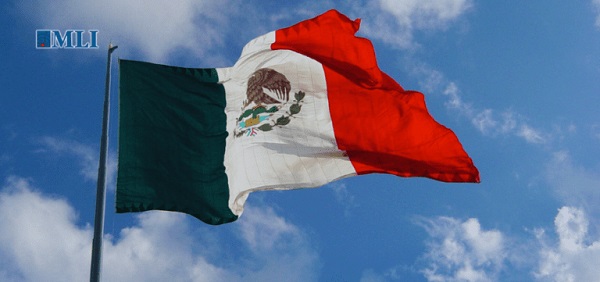Alberta
Indoor masking is back – Province taking action to reduce hospitalizations
Further actions to protect health system from COVID-19
Due to increasing COVID-19 transmission and rising hospital admissions, overwhelmingly amongst unvaccinated Albertans, temporary measures are needed to reduce transmission and prevent the health-care system from being overwhelmed.
Currently, more than 80 per cent of COVID-19 cases in hospital are unvaccinated, including 91 per cent of patients in intensive care.
“Vaccines are safe, effective, and a game-changer. This is why the current wave is different than what we’ve experienced before. While we do not need to return to the same widespread and dramatic measures we had in place earlier in the pandemic, unvaccinated Albertans in particular are still at risk and are placing a heavy load on our health-care system. This is why we are taking measured steps and introducing a new incentive program to encourage more Albertans to get the jab.”
“As I have always done, I use the best currently available evidence from Alberta and around the world to inform my recommendations to protect the health of Albertans. With hospitalization rates rising, it is important that we take additional steps to help reduce the spread of COVID-19. My ultimate goal continues to be to shift from pandemic to endemic and put more focus on the complete health of Albertans – we must learn to live with COVID. Getting vaccinated today is the best possible way for us to get there.”
New vaccine incentive program
A one-time incentive of $100 is now available for all Albertans age 18 or older who receive a first or second dose of vaccine between Sept. 3 and Oct. 14.
This incentive is intended to encourage unvaccinated Albertans to get protected as soon as possible.
After vaccination, eligible Albertans will be able to register online. Alberta Health will validate registrations against provincial immunization data. This website will be available starting on Sept. 13. If Albertans do not have access to a computer, they can contact 310-0000 for assistance, starting on Sept. 13.
Temporary measures
- The province will make masks mandatory for all indoor public spaces and workplaces starting Sept. 4 at 8 a.m. Schools are not required to implement masking but school boards will continue to set COVID-19 management policies as they deem appropriate.
- Also, as of Sept. 4 at 8 a.m., restaurants, cafés, bars, pubs, nightclubs and other licensed establishments will be required to end alcohol service at 10 p.m.
- In addition, Albertans are encouraged to limit in-person contacts. To support this, the province strongly recommends that unvaccinated Albertans limit their indoor social gatherings to close contacts of only two cohort families up to a maximum of 10 people.
- It is also recommended that employers pause their plans to have staff return to work and instead continue with work-from-home measures. If employees are working on location, employees must mask for all indoor settings, except in work stations or where two-metre physical distancing or adequate physical barriers are in place.
Additional vaccine incentives
All Albertans who have received two doses of vaccine and are aged 18 and over are eligible for the remaining $1-million draw for the Open for Summer Lottery. To register and for complete details, visit alberta.ca/lottery. The final draw closes Sept. 23.
Fully protected Albertans are also eligible to enter the Outdoor Adventure vaccine lottery. To register and for complete details, visit alberta.ca/outdoor-adventure-
Book an appointment and get vaccinated
All Albertans can book appointments via AHS online or by calling 811, or through participating pharmacies. Walk-in appointments for first doses are also available. For schedule and locations, visit ahs.ca/vaccine.
Updated modelling
Based on information available in mid-August, an updated projection of estimated COVID-19 cases and hospitalizations to the end of September was developed. Current actual data is trending toward the high end of the projections, therefore numbers may exceed the projections. Peaks in the model are only estimates, and actual peaks may be higher and later than anticipated if current growth trends continue.
This provincial modelling shows intensive care unit patients could possibly peak at around 180 in the medium scenario, although if accelerating trends continue, numbers could reach or exceed the currently projected high scenario at 290.
Other hospitalizations (non-ICU) are currently trending toward the high scenario, with a potential peak of 700 in the next several weeks. If the high scenario peaks are reached, this would mean a greater combined impact on the acute care system than in all previous waves, and if changes in transmission cause greater spread, these numbers could be exceeded.
Modelling is for the entire province. Some regions will experience different case and hospitalization statistics per capita; this will particularly be expected in those areas with lower rates of vaccinations.
Modelling is a dynamic process where there are constant comparisons against observations versus projections. When these comparisons deviate, the model assumptions are re-evaluated, which may change with new information such as outbreak events.
This modelling is now available online. A separate evidence summary has also been posted, including key assumptions and considerations, hospital impact modelling that was developed in June to inform changes announced in late July, and a reference list for further reading.
Alberta
On gender, Alberta is following the science

Despite falling into disrepute in recent years, “follow the science” remains our best shot at getting at the truth of the physical sciences.
But science, if we are to place our trust in it, must be properly defined and understood; it is at its essence an ever-changing process, a relentless pursuit of truth that is never “settled,” and one that is unafraid to discard old hypotheses in the face of new evidence.
And it is in this light—in the unforgiving glare of honest science—that Alberta Premier Danielle Smith’s three new legislative initiatives around gender policy are properly understood, notwithstanding the opprobrium they’ve attracted from critics.
Bill 26, the Health Statutes Amendment Act, proposes to prohibit the prescription of puberty blockers and cross-gender hormones for the treatment of gender dysphoria to youth aged 15 and under. It would allow minors aged 16 and 17 to begin puberty blockers and hormone therapies for gender “reassignment” and “affirmation” purposes only with parental, physician, and psychologist approval. The bill also prohibits health professionals from performing sex reassignment surgeries on minors.
Bill 27, the Education Amendment Act, seeks to enshrine parents’ rights to be notified if their kids change their names/pronouns at school, and it gives parents the right to “opt in” to what sort of gender and sex education their kids are exposed to in school.
And Bill 29, the Fairness and Safety in Sports Act, is designed to protect females in sports by ensuring that women and girls can compete in biological female-only divisions, while supporting the formation of co-ed opportunities to support transgender athletes.
Each of these initiatives is entirely reasonable, given what we know of the science underpinning “gender care,” and of the undeniable advantages that a male physique confers upon biological males competing in sports.
The notion that the trifecta of puberty blockers, cross-gender hormones, and revisionist surgery is a pathway to good health was a hypothesis initially devised by Dutch researchers, who were looking to ease the discomfort of transgender adults struggling with incongruence between their physical appearance and their gender identities. As a hypothesis, it was perhaps reasonable.
But as the UK’s Cass Review exposed in withering detail last spring, its premises were wholly unsupported by evidence, and its implementation has caused grievous harm for youth. As Finnish psychiatrist Riittakerttu Kaltiala, one of the architects of that country’s gender program, put it last year, “Gender affirming care is dangerous. I know, because I helped pioneer it.”
It’s no accident, then, that numerous European jurisdictions have pulled back from the “gender affirming care” pathway for youth, such as Sweden, Finland, Belgium, the Netherlands, and the United Kingdom.
It makes perfect sense that Canadians should be cautious as well, and that parents should be apprised if their children are being exposed to these theories at school and informed if their kids are caught up in their premises.
Yet the Canadian medical establishment has remained curiously intransigent on this issue, continuing to insist that the drug-and-surgery-based gender-affirming care model is rooted in evidence.
Premier Smith was asked by a reporter last month whether decisions on these matters aren’t best left to discussions between doctors and their patients; to which she replied:
“I would say doctors aren’t always right.”
Which is rather an understatement, as anyone familiar with the opioid drug crisis can attest, or as anyone acquainted with the darker corners of medical history knows: the frontal lobotomy saga, the thalidomide catastrophe, and the “recovered memories of sexual abuse” scandal are just a few examples of where doctors didn’t “get it right.”
As physicians, we advocate strongly for self-regulation and for the principle that medical decisions are private matters between physicians and patients. But self-regulation isn’t infallible, and when it fails it can be very much in the interests of the public—and especially of patients—for others to intervene, whether they be journalists, lawyers, or political leaders.
The trans discussion shouldn’t be a partisan issue, although it certainly has become one in Canada. It’s worth noting that Britain’s freshly elected Labour Party chose to carry on with the cautious approach adopted by the preceding administration in light of the Cass Review.
Premier Smith’s new polices are eminently sensible and in line with the stance taken by our European colleagues. None of her initiatives are “anti-trans.” Instead, they are pro-child, pro-women, and pro-athlete, and it’s difficult to see how anyone can quibble with that.
Dr. J. Edward Les, MD, is a pediatrician in Calgary, senior fellow at the Aristotle Foundation for Public Policy, and co-author of Teenagers, Children, and Gender Transition Policy: A Comparison of Transgender Medical Policy for Minors in Canada, the United States, and Europe.
Alberta
Alberta mother accuses health agency of trying to vaccinate son against her wishes

From LifeSiteNews
Alberta Health Services has been accused of attempting to vaccinate a child in school against his parent’s wishes.
On November 6, Alberta Health Services staffers visited Edmonton Hardisty School where they reportedly attempted to vaccinate a grade 6 student despite his parents signing a form stating that they did not wish for him to receive the vaccines.
“It is clear they do not prioritize parental rights, and in not doing so, they traumatize students,” the boy’s mother Kerri Findling told the Counter Signal.
During the school visit, AHS planned to vaccinate sixth graders with the HPV and hepatitis B vaccines. Notably, both HPV and hepatitis B are vaccines given to prevent diseases normally transmitted sexually.
Among the chief concerns about the HPV vaccine has been the high number of adverse reactions reported after taking it, including a case where a 16 year-old Australian girl was made infertile due to the vaccine.
Additionally, in 2008, the U.S. Food and Drug Administration received reports of 28 deaths associated with the HPV vaccine. Among the 6,723 adverse reactions reported that year, 142 were deemed life-threatening and 1,061 were considered serious.
Children whose parents had written “refused” on their forms were supposed to return to the classroom when the rest of the class was called into the vaccination area.
However, in this case, Findling alleged that AHS staffers told her son to proceed to the vaccination area, despite seeing that she had written “refused” on his form.
When the boy asked if he could return to the classroom, as he was certain his parents did not intend for him to receive the shots, the staff reportedly said “no.” However, he chose to return to the classroom anyway.
Shortly after, he was called into the office and taken back to the vaccination area. Findling said that her son then left the school building and braved the sub-zero temperatures to call his parents.
Following his parents’ arrival at the school, AHS claimed the incident was a misunderstanding due to a “new hire,” attesting that the mistake would have been caught before their son was vaccinated.
“If a student leaves the vaccination center without receiving the vaccine, it should be up to the parents to get the vaccine at a different time, if they so desire, not the school to enforce vaccination on behalf of AHS,” Findling declared.
Findling’s story comes just a few months after Alberta Premier Danielle Smith promised a new Bill of Rights affirming “God-given” parental authority over children.
A draft version of a forthcoming Alberta Bill of Rights provided to LifeSiteNews includes a provision beefing up parental rights, declaring the “freedom of parents to make informed decisions concerning the health, education, welfare and upbringing of their children.”
-

 Brownstone Institute2 hours ago
Brownstone Institute2 hours agoThe Most Devastating Report So Far
-

 Economy14 hours ago
Economy14 hours agoCOP 29 leaders demand over a $1 trillion a year in climate reparations from ‘wealthy’ nations. They don’t deserve a nickel.
-

 Alberta12 hours ago
Alberta12 hours agoOn gender, Alberta is following the science
-

 Energy13 hours ago
Energy13 hours agoOttawa’s proposed emission cap lacks any solid scientific or economic rationale
-

 Bruce Dowbiggin1 hour ago
Bruce Dowbiggin1 hour agoCHL Vs NCAA: Finally Some Sanity For Hockey Families
-

 Brownstone Institute1 day ago
Brownstone Institute1 day agoFirst Amendment Blues
-

 Crime2 days ago
Crime2 days agoMexican cartels are a direct threat to Canada’s public safety, and the future of North American trade
-

 Business2 days ago
Business2 days agoDEI gone?: GOP lawmakers prep to clean house in federal government





